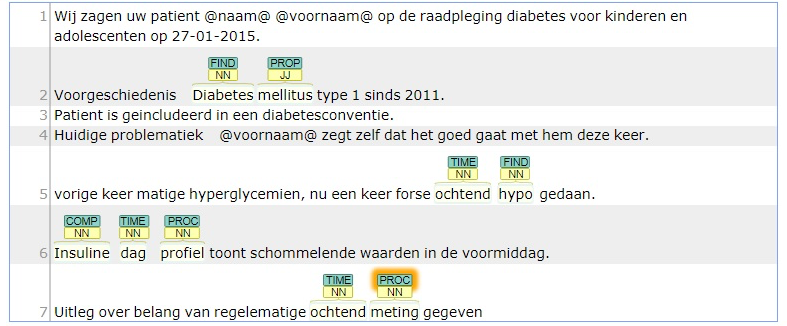MARS
Interplay of Form and Meaning in Complex Medical Terms
Source: This example was kindly contributed by Leonie Grön, Department of Linguistics, KU Leuven, Belgium
This work was part of the project Machine Reading of Patient Records (MARS).
The aim of this study was to reveal how formal and semantic properties work together to create meaning in complex medical terms. In particular, we analyzed whether there is a correlation between the conceptual composition of an expression (e.g. procedure + body part vs. finding + body part), and the preferred grammatical construction (e.g. compound noun vs. prepositional phrase).
To investigate this question, we annotated a sample of clinical records from a Belgian hospital (UZ Leuven) in WebAnno. We created two layers for span annotations and defined custom tagsets at each level. The formal tagset was adapted from the Penn tagset; the conceptual tagset was based on the set of semantic classes and properties defined by a clinical terminology, SNOMED CT.
In total, we annotated 25,000 MWEs at both layers. For each concept combination, we calculated the proportion of individual tag sequences at the formal level. This allowed us to evaluate the distribution of grammatical constructions across the different concept combinations.
Publications
- Grön, L., Bertels, A., & Heylen, K. (2018). The Interplay of Form and Meaning in Complex Medical Terms: Evidence from a Clinical Corpus. In A. Savary, C. Ramisch, J. D. Hwang, N. Schneider, M. Andresen, S. Pradhan, & M. R. L. Petruck (Eds.), Proceedings of the Joint Workshop on Linguistic Annotation, Multiword Expressions and Constructions (LAW-MWE-CxG-2018) (pp. 18–29). Santa Fe: Association for Computational Linguistics. [PDF]

